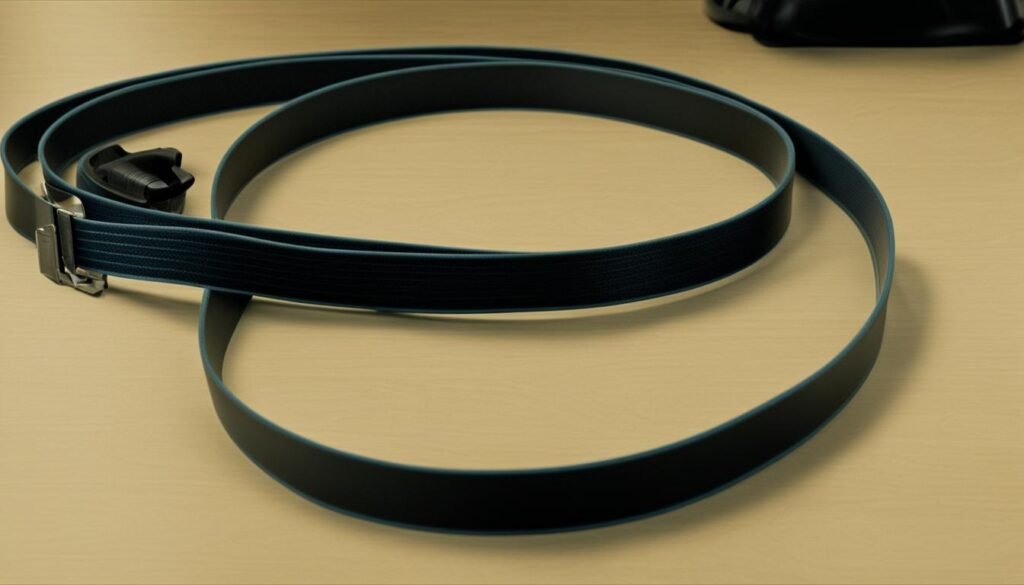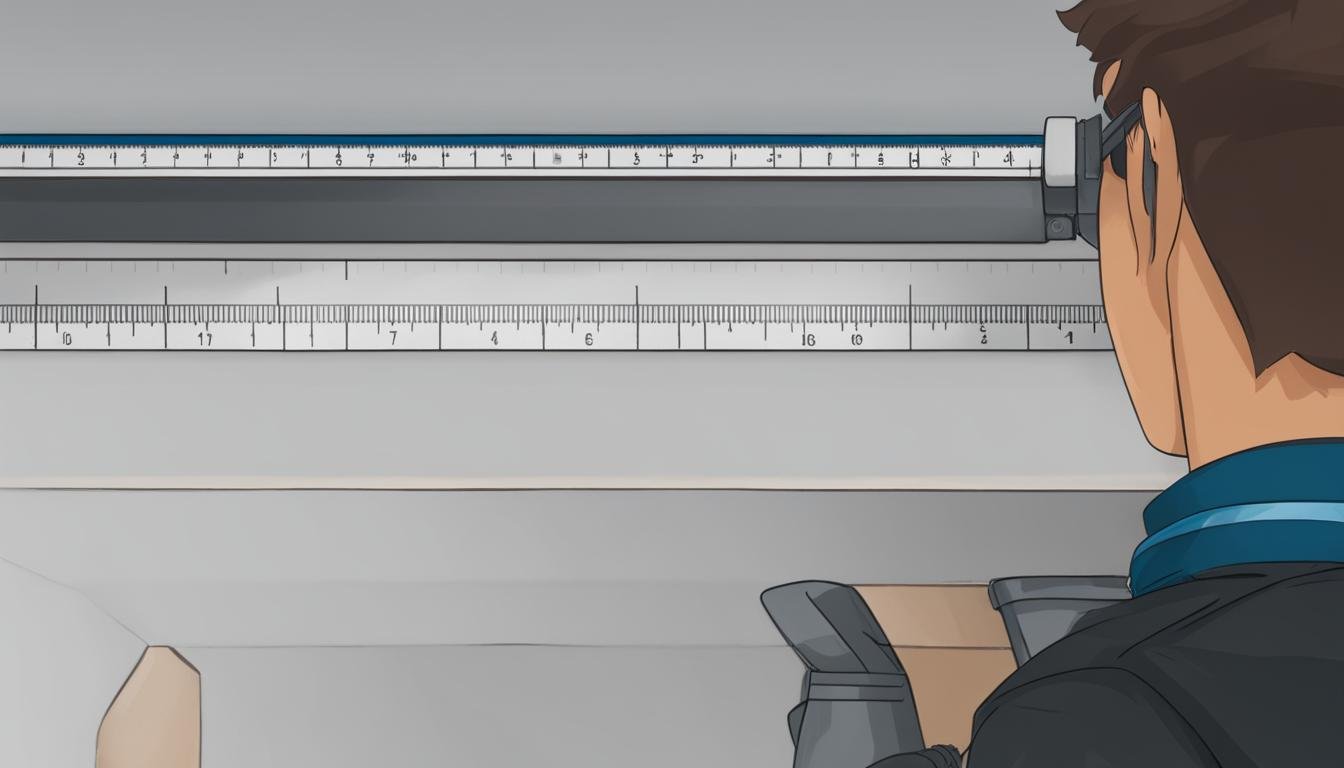Hi there! If you’re wondering how to measure a vacuum cleaner belt, you’ve come to the right place. Vacuum cleaner belts play a crucial role in the cleaning ability of your vacuum, as they transfer power from the motor to the brush roller. It’s important to accurately measure and match the replacement belt to ensure proper performance.
There are different types of vacuum belts available, including round belts, flat belts, cogged belts, and V-belts. Each type has its own shape and characteristics that contribute to their efficiency and lifespan. Regardless of the type, it’s essential to correctly measure and match the belt to your specific vacuum model.
Most vacuum manufacturers recommend replacing the belt every few months or years, depending on the type of belt. For instance, round belts should be replaced every 3-6 months, flat belts every 6-9 months, and cogged and V-belts every 1-2 years. Regular belt maintenance is essential to ensure optimal cleaning power.
To measure a vacuum cleaner belt accurately, you need to refer to your vacuum’s model number. The model number will help you find the correct belt size that’s specifically designed for your vacuum. With the right measurements and matching belt, you can keep your vacuum running smoothly and efficiently.
Key Takeaways:
- Accurately measure and match the replacement vacuum belt to ensure proper performance.
- There are different types of vacuum belts, including round belts, flat belts, cogged belts, and V-belts.
- Most vacuum manufacturers recommend replacing the belt every few months to years in order to maintain optimal cleaning power.
- Refer to your vacuum’s model number to find the correct belt size and ensure a proper fit.
- Regular belt maintenance is essential to prevent premature belt failures and maintain a properly functioning vacuum cleaner.
Types of Vacuum Belts
Vacuum belts come in various types, each with its own shape and characteristics. Understanding the different vacuum belt types can help you choose the right one for your vacuum cleaner and ensure optimal performance.
1. Round Belts
Round belts are tube-shaped and utilize elastic tension to stay in position and transfer power. They are commonly found in older vacuum models. Due to their design, round belts require periodic replacement every 3-6 months to maintain their effectiveness.
2. Flat Belts
Flat belts are the most popular and commonly used type of vacuum belts. They have a flat, wide shape that provides more contact area with the motor shaft and brush roller. This increased contact area enhances efficiency and prevents slippage during operation. Flat belts typically need replacement every 6-9 months to ensure optimal performance.
3. Cogged Belts
Cogged belts, also known as geared belts, have teeth on the inside that fit into a sprocket on the brush roller. This design allows for efficient energy transfer from the motor to the brush roller, ensuring effective cleaning. Cogged belts have a longer lifespan compared to round and flat belts and generally need replacement every 1-2 years.
4. V-Belts
V-belts have a tapered shape that increases the contact area with the brush rollers. This design improvement enhances performance and power transmission. V-belts are built to last and typically have a lifespan of around 1-2 years before replacement is necessary.
When choosing a vacuum belt, consider the type of vacuum cleaner you have and the manufacturer’s recommendations for belt replacement. Selecting the appropriate belt type and replacing it at the recommended intervals will help maintain the cleaning efficiency and longevity of your vacuum cleaner.
Matching a Replacement Vacuum Belt
When it comes to replacing your vacuum belt, accuracy is key to ensure optimal performance. Vacuum manufacturers do not have a standardized naming system for belts, which can make finding the right one a bit challenging. However, there is a foolproof way to find an exact match: by using your vacuum’s model number.
Why is the model number important? Well, each vacuum model has its unique design specifications and requirements. The belt is specifically engineered to deliver the right amount of tension and power to match the vacuum’s motor and brush roller.
So, how do you find the model number? It’s usually located on a sticker or plate on the back or bottom of the vacuum cleaner. Look for a combination of letters and numbers that identify the specific model.
If you’re having trouble locating the model number or if it’s not visible, don’t worry. You can try using the manufacturer’s naming system to search for the right belt. Many manufacturers provide belt compatibility information on their websites or in their product manuals.
Additionally, you can always reach out to the vacuum manufacturer directly for assistance. Their customer service team can help you identify the correct belt for your vacuum based on its make and model.
Remember, accurate matching of the replacement belt is crucial for maintaining optimal cleaning power and preventing premature belt failures. Taking the time to find the right belt based on your vacuum’s model number will ensure a smooth and hassle-free replacement process.

| Vacuum Brand | Model Number | Compatible Belt |
|---|---|---|
| ABC Vacuums | VC1234 | ABCVB456 |
| XYZ Cleaners | XZ9876 | XYZCB789 |
| Perfect Sweep | PS5678 | PSVB123 |
Conclusion
Replacing a vacuum cleaner belt is a straightforward process that can easily be done at home. By following a few simple steps, you can ensure that your vacuum continues to perform at its best. The first step is to measure the belt accurately, which involves referring to your vacuum’s model number to find the correct size. This will ensure a proper fit and optimal cleaning performance.
Once you have the right replacement belt, it’s important to check it regularly for signs of wear and tear or stretching. Inspecting the belt can help you identify any issues before they lead to a failure. It’s also a good idea to keep a spare belt on hand in case of emergencies, as belts can break unexpectedly.
Proper installation is key to ensuring that the vacuum belt functions correctly. Make sure to follow the manufacturer’s instructions for your specific vacuum model. Take your time during the installation process and ensure that the belt is securely attached to both the motor shaft and the brush roller. This will prevent slipping and maximize the power transfer.
By measuring your vacuum cleaner belt accurately, regularly checking for wear, and installing it properly, you can extend the life of your vacuum and maintain cleaner floors. The next time you need to replace your vacuum belt, remember these tips for a hassle-free and efficient process.
FAQ
Why are vacuum cleaner belts important?
Vacuum cleaner belts are crucial for the cleaning ability of a vacuum as they transfer power from the motor to the brush roller.
What are the different types of vacuum belts?
Vacuum belts come in various types, including round belts, flat belts, cogged belts, and V-belts.
How often should I replace my vacuum cleaner belt?
Most vacuum manufacturers recommend replacing the belt every 3-6 months for round belts, 6-9 months for flat belts, and 1-2 years for cogged and V-belts.
How do I measure a vacuum cleaner belt accurately?
To measure a vacuum cleaner belt accurately, you should refer to your vacuum’s model number to find the correct belt size.
How do round belts, flat belts, cogged belts, and V-belts differ?
Round belts are tube-shaped, flat belts have more contact area, cogged belts have teeth, and V-belts have a tapered shape for improved performance and lifespan.
What’s the best way to match a replacement vacuum belt?
The best way to match a replacement vacuum belt is to use the vacuum’s model number as a reference. This ensures an exact match for optimal performance.
How often should I check my vacuum belt for wear and tear?
It is recommended to periodically check the vacuum belt for signs of wear and tear or stretching and replace it if necessary.
How can I prevent premature belt failures?
Proper belt installation and careful vacuum use can help prevent premature belt failures. It’s also a good idea to keep a spare belt on hand for emergencies.





Leave a Reply